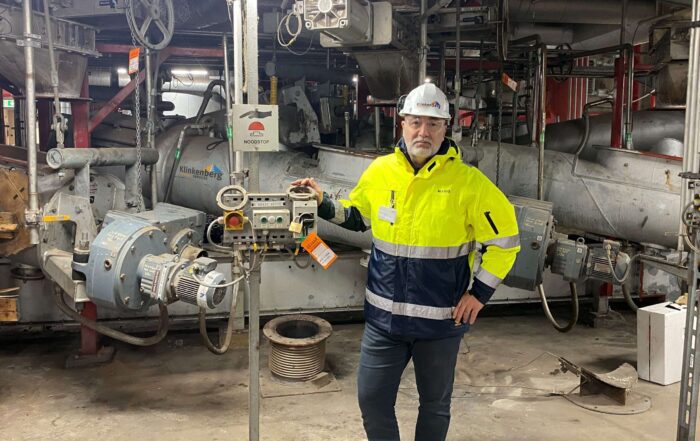A global oil company that carries out activities across many countries worldwide asked MaxGrip to partner up with them regarding the asset integrity management of their Asian offshore platforms. The company produces oil and gas, downstream and upstream. MaxGrip’s versatile asset integrity team (engineers and specialists) were closely working with the company to provide support and consultancy across multiple disciplines (static/ piping, structures and pipelines). This includes a variety of projects pertaining to asset data management and updates, Risk Based Inspection (RBI) assessments, inspection management and planning, Fitness for service (FFS) assessments and as well as Asset Life Extension (ALE) studies.
Challenge: Optimize Asset Integrity
As substantial capital and operational expenditures are involved, it is vital for
an oil company to focus on getting the best cost-benefit balance while operating
reliably and safely throughout the asset lifecycle. To that end, this oil company
asked MaxGrip to take on a variety of projects and activities in the area of asset
integrity. The client needed to get better insights in the available data, improve
data quality and be able to make (long-term) decisions based on the data.
Additionally, they needed to have Asset Lifetime Extension (ALE) studies and
Risk Based Integrity (RBI) assessments for six offshore platforms to ensure
safety and regulatory compliance as well as to see if OPEX cost could be reduced.
MaxGrip was also tasked with looking at modifications to improve the facilities’
technical integrity, uptime and production processes.
Approach: Data Dashboards & Specialized Studies
A MaxGrip team of engineers and specialists has supported this client with a
number of specialized studies and activities in order to ensure asset integrity.
Below is a high-level overview of the different projects and studies that our
consultants performed. One aspect that needs to be highlighted is that all
projects benefited from MaxGrip’s thorough data management and dashboarding
capabilities. MaxGrip experts collected all the available asset data, performed
data cleansing and imported all data into our trusted MaxGrip asset integrity data
tool. This structured and quick way of working resulted in data dashboards that
offered management full insights on performance, progress tracking, estimated
cost and long-term planning.
Integrity Scorecard for structural assets
We helped the client to develop and update the structural integrity summary
report for all platforms. The integrity summary report includes a short and precise
update on the overall integrity status, which covers underwater jacket and topside
structures, a summary of the in-place/fatigue/ push-over findings, the weight
control monitoring update, the structural inspection anomalies status, inspection
findings and Integrity threat & mitigation status. An overview like this enables the
client to quickly see what the status is and what needs to be improved. A longer,
detailed version of the report including a mitigation report was offered on paper.
This was used by our client to provide yearly updates to their management.
Asset integrity scorecard

Asset Lifetime Extension studies
We performed ALE studies for three offshore wellhead platforms. The objective
of the study was to determine whether it is feasible to continue to operate the
facilities safely and economically beyond the original design life. This included
all disciplines: Static & Rotating Mechanical, Piping, Electrical, Pipeline, structure,
Instrumentation & Controls, Safety equipment, Telecommunication, Lifting
equipment and Wells integrity.
Our MaxGrip approach is aligned with the national regulator’s approach
(Petronas MFOM guidelines) ensuring that we were able to prove compliance
to the set rules and regulations.
MaxGrip ALE Approach

If the client follows all recommendations and carries out the deployment program
then the asset life of the three platforms can be extended for fifteen to seventeen
more years.
Asset Lifetime Extension dashboards


Risk Based Inspection re-assessment and update for Static/Piping,
Structural and Subsea Pipelines assets
The objective of the Risk Based Inspection (RBI) re-assessment was to optimize
the latest available documents, cleanse the data and assist the client in preparing
the long-term inspection planning for Static/Piping, Structures and Subsea
Pipelines assets. The RBI assessments were focused on:
- Piping, Pressure Vessel, Heat Exchanger, Tanks and Pressure Relief Valves
- Underwater and topside structures
- Subsea Pipelines, risers and spools
After having done all the preparatory work such as cleaning up the data, performing
the RBI assessment and completing the RBI dashboard, the MaxGrip consultants
verify the outcomes and recommendations with the client stakeholders in
workshops.
Risk Based Inspection dashboards


The Results: 10% Cost Saved and Asset Life Extended with 15 Years
The longer-term partnership of MaxGrip and this oil company resulted in some great
benefits:
- Integrated and improved asset integrity insights and control over data
through data dashboards, incl. recommendations, cost estimations and
long-term action planning; - Total estimated cost savings of more than 10%, due to the optimization
of inspection planning and the risk-based re-assessment activities; - Proven compliance to the national regulator’s rules and regulations
(Petronas MFOM guidelines); - Expected asset lifetime of platforms extended with fifteen to seventeen
years based on recommendations and the deployment plan; - Better understanding of asset behavior through proper damage
mechanisms identification and inspection planning improvements.
Get inspired
Middle managers are the driving force for effective change. We list three essential ingredients.
Media interview with client Klinkenberg about their rapid EAM implementation and digital transformation
By tracking downtime and making data actionable, you will find yourself in a better position to make smart decisions about your maintenance strategy.





